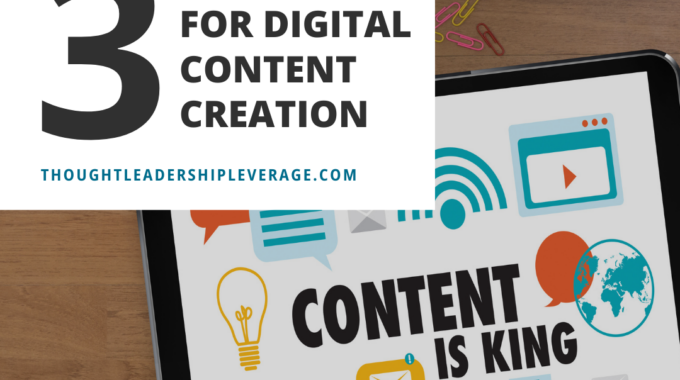Hey there, thought leaders! Ready to level up your digital content game and make some…
Do You Create Value Based on Your Input or Your Output?
Traditionally, people get paid for either their input or their output. Input could be as simple as being compensated for the number of hours you work, while output might be how many units of something you can produce and sell. This model still holds for many people in a wide variety of trades and professions, however, in the world of knowledge workers and content, it gets a little fuzzy. Actually, it can get very fuzzy. It can be confusing for the provider as well as for the purchaser, the employer and the employee.
I think a better way to think about it is to understand where you are adding value and what that value is actually worth. Supply and demand certainly are factors that can’t be ignored, as well as industry norms and rules. For many knowledge workers those really aren’t the primary considerations.
I spend a good deal of my time working with clients in an advisory capacity. That’s primarily an input role. My ideas, experience, thoughts, plans and such are adding value by allowing them to benefit from my experience. They learn how to create new revenue streams, how to better position themselves in the marketplace and ultimately earn more money from their content. It’s a fair deal for everyone involved – they get insight and expertise and I get paid for providing it.
When I work in an advisory capacity I typically charge a flat project fee. Whether I can deliver the goods in an hour or a hundred hours isn’t the issue. The issue is value. Are my clients receiving real value? I tend to think so and more importantly, I believe they do as well. I’m limited to a degree as there are only so many days in a week that I can “sell” my time so it’s not how I choose to spend more than half of my time.
I also work with a select group of clients in such a way that I don’t get compensated until transactions are consummated and revenue rolls in. It’s a partnership whereby they provide various resources such as their content and brand, and I add my expertise to the mix (sales, marketing, product development, etc.). In these cases it’s really an output function. We sell a consulting project, a training program, a keynote, etc. and we both make money. There’s risk sharing involved and the stakes are usually much larger than when I serve as a consultant.
In both instances I provide value, in both I’m compensated. The upside is much higher here as the value of the transactions tend to be relatively large. The tricky part is knowing when it is fair to be compensated for input and when for output.
Fair is obviously a subjective term but ultimately it means that over the long term it’s equitable to both parties and everyone benefits. I’ve established a few rules for my business that have served myself and my clients well over the years. I always start off working with a new client as an adviser or a consultant. I get paid for my input. I’m confident they’ll receive value equal to or greater than my fee and we get to learn about one another and develop a relationship. If we both feel it’s mutually beneficial we may move the relationship to an output based relationship (typically a partnership of some sort). In those instances both of our respective needs need to be met or the relationship will not thrive.
I also am a big believer in the “No A-Hole Rule” and don’t work with people that I think are A- Holes. I also assume that to some I may be the A-Hole and they choose not to work with me, but such is life.
Do you know where you create the most value? Do you have a business model that allows you to be flexible and add value on either side of the equation given the right circumstances? I think the real issue is having the understanding and the model to allow you to capitalize on whatever side of the equation you are adding the most value.
Comments (2)
Comments are closed.







Great article well written and insightful.
Thamks
Wonderful article. This post resonated with me and our firm. As a new company, it is very critical to us to be able to identify what projects are input vs output as this allows us to better serve our clients. Our goal is to help them increase and improve